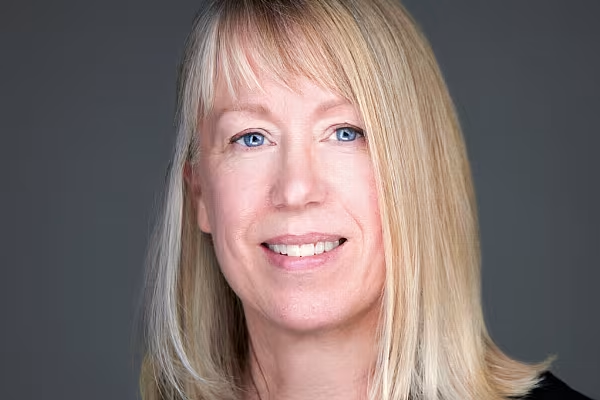The percentage of women in executive roles within retail and consumer goods is increasing, albeit at a sluggish pace. Stephen Wynne-Jones asked Allyson Zimmermann, CEO of LEAD Network, what can be done about it. This article featured in ESM's November/December 2023 edition.
While the retail and consumer goods industries have made great strides in terms of diversity, equity and inclusion (DE&I) in recent years, female representation at the executive level still has some way to go, particularly when it comes to roles such as CEO, managing director, or company president.
That was the key takeaway from the LEAD Network’s recent Gender Diversity Scorecard, or GDS, which found that 37% of senior executive positions in the European consumer goods and retail sectors across Europe are now occupied by women – up from 35% in 2021, and 34% in 2019.
The LEAD Network, which is aimed at advancing women in the retail and CPG workforce, is one of Europe’s fastest-growing non-profit organisations, counting some 19,000 members across 81 countries. It has been conducting the biennial GDS since 2017, and while the current total is considerably higher than that recorded in its first such report (25%), the devil, as always, is in the detail.
“I was expecting a bigger jump,” Allyson Zimmermann, the chief executive of the LEAD Network, says of the current GDS findings. “This year, the World Economic Forum estimated it will take 131 years to achieve gender parity, which would be 2154. We cannot wait this long.
“We are further along the road than we were in 2017, which is a positive. We are moving in the right direction, but it’s not enough.”
Zimmermann took over as chief executive of the LEAD Network in January of this year, having spent eight years as executive director of Catalyst, a non-profit focused on building ‘workplaces that work for women’. As she tells ESM, the retail and consumer goods sectors have a “massive opportunity” to implement more gender parity into their executive structures, if only to reflect the composition of their consumer base.
“Some 75% of consumer buying decisions are being made by women*,” she says. “How can you understand the market if you’re not reflecting that decision-making?
“I think there’s a perception that, ‘If we give it time, it’s going to happen.’ I hear this a lot from leaders – that this is just a generational issue, or a time issue – but it’s not.”
Gender Diversity Scorecard
Some 45 retail and CPG firms – with a combined revenue of more than $1 billion – participated in the LEAD Network’s recent GDS. It found that, of the 8,725 executive roles in said companies, 3,240 were held by women (37%). In retail, women comprise 35% of senior executive roles, while consumer goods manufacturing boasts a slightly higher percentage, with 38% representation.
While the figures are going in the right direction, the slowdown in recent years – a 1% or 2% gain, rather than the 9% jump between 2017 and 2019 – is telling. According to Zimmermann, the COVID-19 pandemic had a more marked effect on women in the workplace than their male counterparts.
“During COVID, women went backwards,” she says. “When you think about retail, many women are in front-end roles – whether it’s a cashier, stock replenishment, and so forth. Those roles were massively impacted during the pandemic.
“Now, when you look at store manager roles or category manager roles, women are not making up that pool. It’s a pipeline issue, and it’s not just linked to COVID. If you look at how many women are getting experience in those sort of positions, they’re not getting into the pipeline at the same pace that men are. It’s the same in consumer goods. Men and women are similar at entry level, but as you go up, you’ll see more and more men. There’s an opportunity gap.”
This has been referred to by McKinsey as the ‘broken rung’ – the obstacles that women face on the path to senior leadership positions – and it’s a phenomenon that’s reflected as you make your way up the various echelons of a business.
Going back to the GDS figures, if you look at the senior roles that women most often occupy at retailers and consumer goods firms, by far the highest percentage is in marketing, with 19% female representation at VP/Director/Head of Europe level within this category. In HR, the percentage of women holding VP/Director/Head of Europe positions stands at 12%, while in finance, it stands at 10%, in sales at 8%, in R&D at 7%, in production and/or supply chain at 6%, and in legal at 5%.
Focusing on the top tier, female representation is minimal, with little to no presence at the top of the tree. Just 2% of Corporate Affairs – Head of Europe roles are held by women, as are 1% of CEO, CFO, chairperson or senior independent director positions.
“One of the myths that I hear all the time is that a particular business is a ‘meritocracy’, that it ‘promotes those that are the best’,” says Zimmermann, adding that she hears from senior women leaders all the time about their need to ‘constantly prove themselves’. “You’re not a meritocracy if you have 95% men and 5% women as managers.
“Have you ever heard of the groundwater metaphor? If you see a lake, and there’s a fish belly-up, floating on the surface, you ask, ‘What happened to the fish?’ But if you see multiple fish floating belly-up, you’re going to ask, ‘What’s wrong with the lake?’ Many companies might have the best intentions, and they’re looking at the fish as the problem, but the real problem is the lake.”
Strategic Commitment
The lack of women at the top tier of retail and consumer goods is reflective, to some degree, of the structures inherent in firms when it comes to personal advancement. While it is encouraging to note that 73% of participating companies in the GDS have a board-level ‘champion’ accountable for progress on DE&I matters, the data also indicates that there is an opportunity for firms to go much further.
For example, just 27% of companies make diversity a key criterion when selecting suppliers – a key aspect of running any business. In terms of recruitment, while a slight majority of companies (53%) claim that they have policies in place to ensure ‘gender-diverse, balanced interview panels,’ just 42% insist on a gender-balanced slate of candidates for open positions at every level.
“If you do enough work at the front end, you can reduce bias in the system,” says Zimmermann, “but you’ve also got to embed it in the system.
“Research shows that when you have a short list of three men and one woman, the likelihood of hiring the woman is zero.** This surprises many people, because many believe that if you have a woman she has an even greater chance of getting the job. That is far from the truth. In some ways, one could argue it is a form of tokenism or performative action to have only one woman in the shortlist. What’s interesting, though, is when you have two women and two men, the likelihood of hiring a woman goes up to 50%.”
Whether recruiting internally or using an external recruiter, retailers and consumer goods firms need to ensure that potential biases are removed from the system – meritocracy may be your goal, but no company can be truly meritocratic if the percentage of women being interviewed is a fraction of the men.
“Hold recruitment companies to account, to make sure they bring you a balanced slate,” Zimmermann adds. “I have seen companies send a recruiting team away because they weren’t balanced.”
The Inclusive Journey
The findings of the GDS were discussed in detail at the recent LEAD Network Annual Conference, held in Düsseldorf in October, which welcomed several industry heavy hitters to the stage, including the chief executives of Henkel, METRO AG, Givaudan and Asahi Europe & International, as well as leading representatives from Diageo, P&G, Ahold Delhaize and others.
While those present have made solid commitments to improve female representation on a management level – Henkel, for example, has committed to reaching gender parity across all management levels by 2025 – challenges remain in ensuring that the wider industry follows suit.
To date, 55% of members have committed to the LEAD Network’s CEO Gender Parity Pledge, which will seek to increase female representation at the director level and above and build a plan to achieve gender parity over the next decade, which is a positive step, particularly given the increasing influence of Gen Z on the marketplace.
“I think this is something that’s going to be a wake-up call for many when they’re trying to look at leadership in their organisation,” says Zimmermann. “The culture of a particular business will determine whether people feel comfortable in their roles, or whether they will choose companies or industries in which they can advance to the very top – and that’s not limited to women. Other underrepresented, marginalised groups are held to even high[er] standards.
“How do you address that in your business culture? How do you address the inequity in terms of who you are promoting, and how are you building your pipeline so it’s fit for the future?”
To borrow an old cliché, firms that ‘do what they have always done will get what they have always got’. When it comes to gender parity, some retailers and consumer goods may face a hard reckoning in the coming years if they don’t rethink their corporate structures.
More information on the LEAD Network can be found at www.lead-eu.net.
[*Source: Nielsen IQ, Brands, It’s time to wise up to women, 2019; **Source: If There’s Only One Woman in Your Candidate Pool, There’s Statistically No Chance She’ll Be Hired, Harvard Business Review, April 2016]














